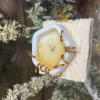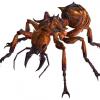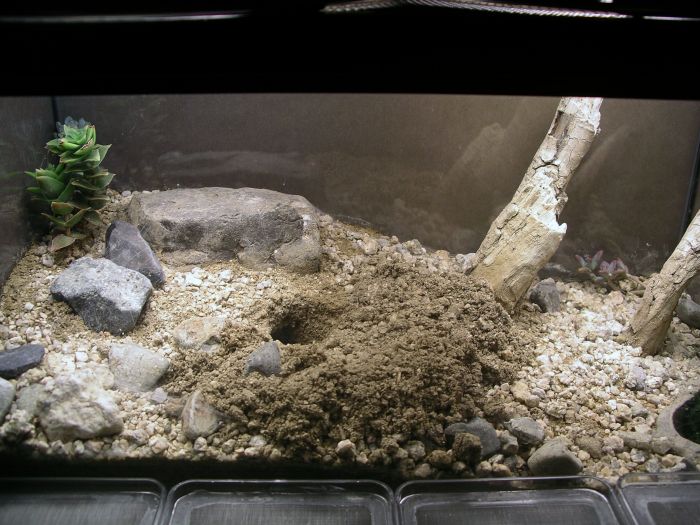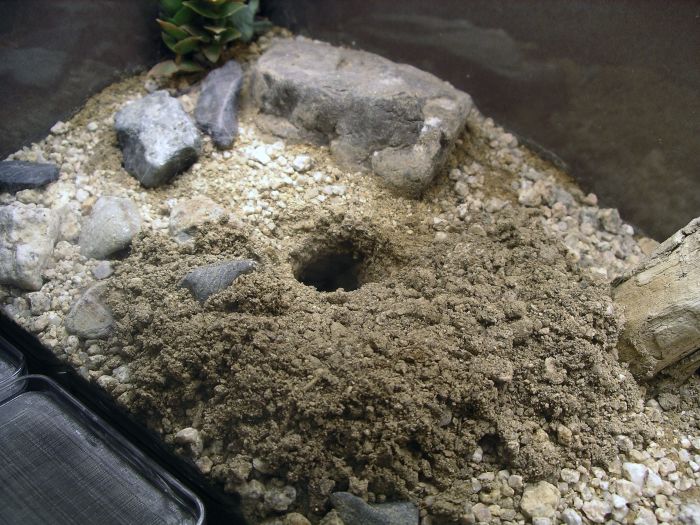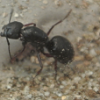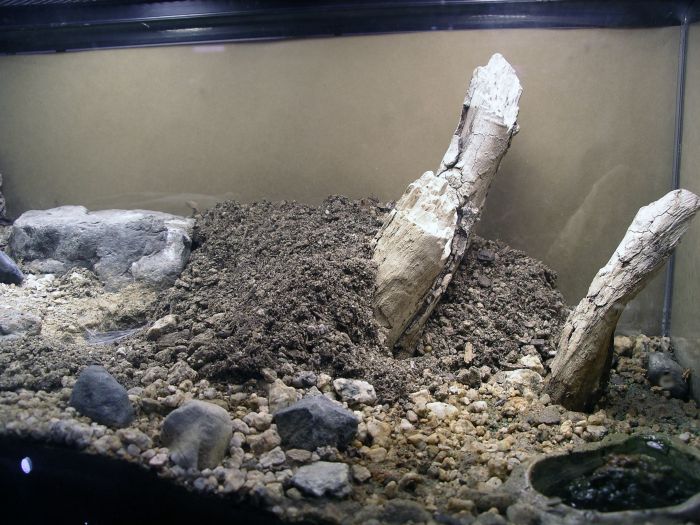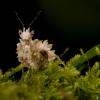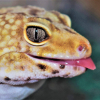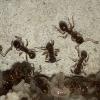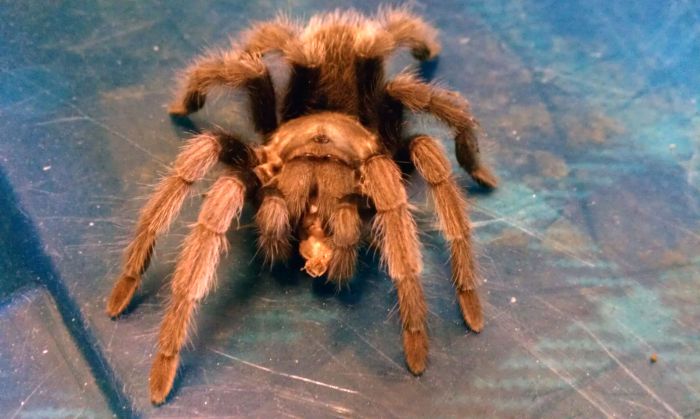
I found a young female one last summer and still have her now. I dug her out of a small burrow in the ground near Joshua Tree National Park. I quickly threw together an aquarium for her with some potting soil. I made her a nice little burrow with a rounded piece of bark, but she just dug a hole under it and made a big burrow of her own all the way down on the bottom of the tank. Supposedly these things can dig some pretty deep burrows. I'm still wondering how they can dig these holes in the rock hard dirt. She did a good job digging her hole in this container, even though I never actually saw her doing any digging. This was potting soil though, so it was pretty soft.
I made her a new container with dirt I actually got from the desert where I found her. I wet it all down, so it should dry hard like the desert floor. I started a little hole for her in hopes that she'll decide to make that her home and dig her burrow there.
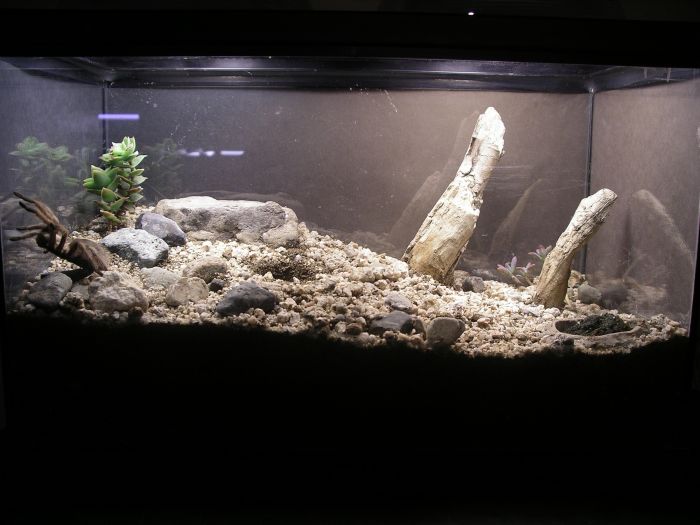
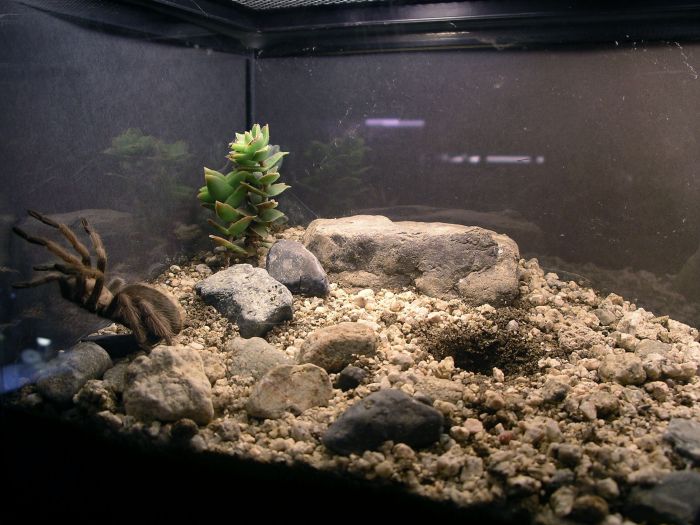
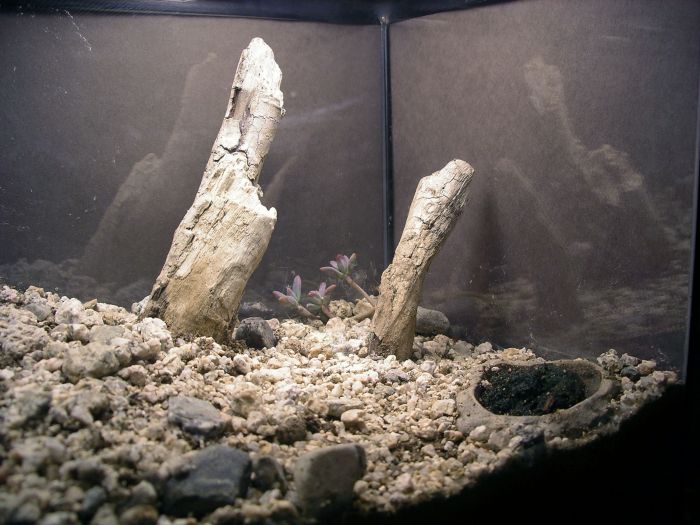
Here's she is eating a Katydid in her old potting soil container.



